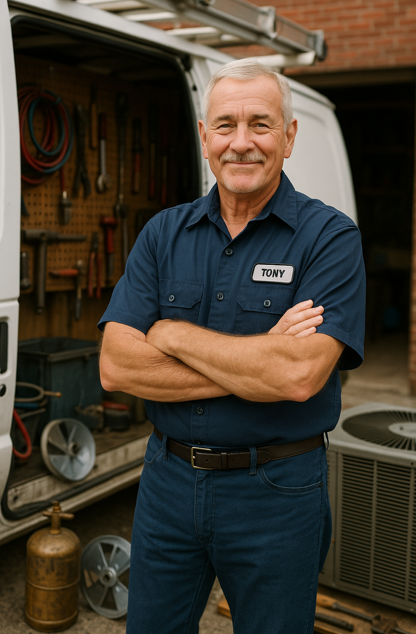So, you're eyeing a new HVAC system and keep hearing about these "dual fuel" setups. Sounds fancy, right? But before you shell out extra cash, let’s cut through the noise. I’m Tony Marino, and here’s what you really need to know about dual fuel HVAC systems—what they are, how they work, and if they’re a smart investment for your home.
What Is a Dual Fuel HVAC System?
In plain English: A dual fuel system combines a gas furnace with an electric heat pump or air conditioner. The electric system handles cooling (and mild heating), while the furnace kicks in when temperatures drop below a certain threshold. You’re using whichever is more efficient based on outdoor conditions.
-
Cooling and mild heating? Use the heat pump or R-32 AC.
-
Freezing cold? Fire up the gas furnace.
It’s a smart way to balance energy efficiency with reliable heating performance.
Why People Consider Dual Fuel Setups
Homeowners usually go dual fuel for three main reasons:
-
Energy Savings: Electricity is more efficient in mild temps. Gas takes over when it’s cheaper to heat.
-
Fuel Flexibility: Great if electric rates or gas prices fluctuate in your area.
-
Environmental Benefits: Especially when paired with an R-32 AC unit, which has a lower global warming potential than older refrigerants.
When a Dual Fuel System Makes Sense
Dual fuel isn’t for everyone. Here's when it's a smart move:
-
You live in a climate with cold winters and mild shoulder seasons.
-
Your utility rates make gas cheaper in winter but electricity more affordable in fall/spring.
-
You want the most efficient year-round comfort setup.
For example, if you're in the Midwest or Mid-Atlantic U.S., this setup can really pay off. If you're in a place like Florida or Arizona? Stick with an electric-only system.
The Cost Breakdown
Let’s talk dollars. Dual fuel systems cost more upfront:
| Component | Approx. Cost (Installed) |
|---|---|
| Standard AC & Furnace | $6,000 – $9,000 |
| Dual Fuel System | $8,000 – $12,000 |
But over time, the energy savings can even things out—especially when paired with a high-efficiency R-32 AC and a 96%+ AFUE furnace.
Need proof? Tools like the SEER2 savings calculator can help estimate your savings based on system efficiency.
Matching Dual Fuel with R-32 Systems
If you're considering a dual fuel setup, you need components that play nice together. The Goodman 3 Ton R-32 System is a great example of an outdoor unit that can be paired with a high-efficiency gas furnace for a dual fuel setup.
Benefits of R-32 in a dual fuel setup:
-
Lower environmental impact than R-410A
-
Improved heat transfer efficiency
-
Future-proof with 2025 refrigerant regulations
Pros and Cons of Dual Fuel HVAC
✅ Pros:
-
Year-round efficiency
-
Long-term energy savings
-
More eco-friendly when using R-32
-
Redundancy—if one system fails, the other can back it up
❌ Cons:
-
Higher upfront cost
-
More complex installation
-
May not be worth it in mild climates
Final Verdict: Should You Go Dual Fuel?
If your winters are brutal, your energy rates are all over the place, or you want top-tier efficiency, a dual fuel system could be a game-changer. If you're in a consistently warm climate? Probably not worth the upgrade.
Want to see some of the best options for dual fuel-ready systems? Start with our R-32 AC and Gas Furnace collection and let us help you pair the right system with your home’s needs.







